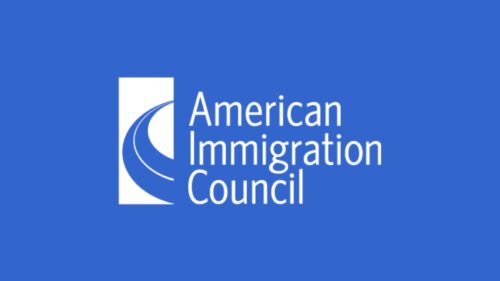WASHINGTON, Feb. 21, 2023—Today, the U.S. Department of Justice and the U.S. Department of Homeland Security released a Notice of Proposed Rulemaking (NPRM) that will implement a new asylum transit ban—one of the most restrictive border control measures to date under any president. The policy will penalize asylum seekers who cross the border irregularly or fail to apply for protection in other nations they transit through on their way to the United States.
As described in the NPRM, the proposed asylum transit ban rule would all but bar asylum for any non-Mexican who crosses the U.S.–Mexico border between ports of entry, unless they had previously applied for—and been denied—asylum in another country before arrival.
Specifically:
-
The rule would apply to all non-Mexican migrants (except unaccompanied minors) who had not been pre-approved under one of the Biden administration’s parole programs, which are currently open only to certain nationals of 5 countries; pre-register at a port of entry via CBP One or a similar scheduling system (or arrive at a port of entry and demonstrate they could not access the system); or get rejected for asylum in a transit country.
-
During an asylum seeker’s initial screening interview with an asylum officer, the officer will determine whether the new rule applies to them. If so, they will fail their credible fear screening unless they can demonstrate they were subject to an exception such as a medical emergency, severe human trafficking, or imminent danger—which would “rebut the presumption” of ineligibility.
-
Migrants subject to the rule, who do not meet the exceptions above, would be held to a higher standard of screening than is typically used for asylum (“reasonable fear”). If a migrant meets that standard, they will be allowed to apply for asylum before an immigration judge—although the text of the proposed regulation is unclear on whether they would actually be eligible to be granted asylum.
-
Migrants who do not meet the credible or reasonable fear standard can request review of the fear screening process in front of an immigration judge.
Once the regulation is formally published in the Federal Register, the public will have 30 days to comment on the proposal. The administration is legally required to consider and respond to all comments submitted during this period before publishing the final rule, which itself must precede implementing the policy. Given the Biden administration’s expectation that the new rule will be in place for the expiration of the national COVID-19 emergency on May 11, and the potential end of the Title 42 border expulsion policy at that time, the timeline raises substantial concerns that the administration will not fulfill its obligation to seriously consider all comments submitted by the public before the rule is finalized.
Furthermore, the sunset date for the new rule, two years after it becomes effective, is after the end of the current presidential term—making it impossible to guarantee it will not be extended indefinitely.
In 2020, a Ninth Circuit Court of Appeals panel blocked the Trump administration’s asylum transit ban from being applied to thousands of asylum seekers who were unlawfully prevented from accessing the U.S. asylum process. The ban was later vacated by the D.C. District Court.
The American Immigration Council was a part of the Al Otro Lado v. Wolf class action lawsuit on behalf of individual asylum seekers and the legal services organization Al Otro Lado (AOL), which challenged the legality of the previous asylum transit ban as applied to asylum seekers who had been turned back at the U.S.–Mexico border.
The following statement is from Jeremy Robbins, Executive Director, The American Immigration Council:
“President Biden committed to restoring access to asylum while on the campaign trail, but today’s proposal is a clear embrace of Trump-style crackdowns on asylum seekers, many of whom are fleeing from globally recognized oppressive regimes. For over four decades, U.S. law has allowed any person in the United States to apply for asylum no matter how they got here. The new proposed rule would all but destroy that promise, by largely reinstating prior asylum bans that were found to be illegal.
“Not only is the new asylum transit ban illegal and immoral, if put into place as proposed, it would create unnecessary barriers to protection that will put the lives of asylum seekers at risk. While the rule purports to be temporary, the precedent it sets—for this president or future presidents—could easily become permanent.
“For generations, the United States has offered a promise that any person fleeing persecution and harm in their home countries could seek asylum, regardless of how they enter the United States. Today’s actions break from his prior promises and threaten a return to some of the most harmful asylum policies of his predecessor—possibly forever.”
###
For more information, contact:
Brianna Dimas 202-507-7557 [email protected]
The American Immigration Council is a powerful voice in promoting laws, policies, and attitudes that honor America’s proud history as a nation of immigrants. Through research and policy analysis, litigation and international exchange, the Council seeks to shape a twenty-first century vision of the American immigrant experience. In January 2022, the Council and New American Economy merged to combine a broad suite of advocacy tools to better expand and protect the rights of immigrants, more fully ensure immigrants’ ability to succeed economically, and help make the communities they settle in more welcoming. Follow the latest Council news and information on ImmigrationImpact.com and Twitter @immcouncil.

